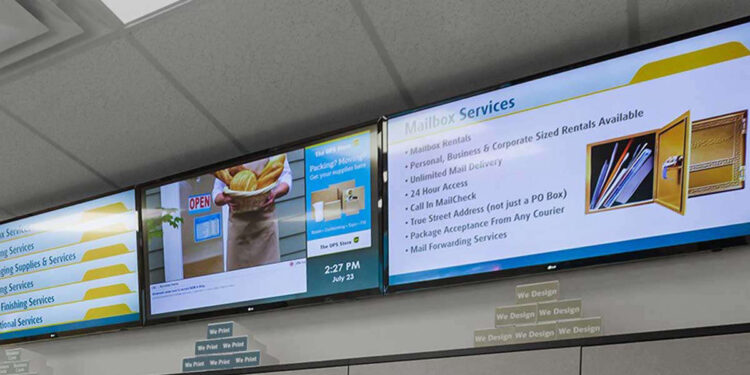Digital signage is a rapidly growing industry, with more and more businesses turning to digital displays to communicate with their customers. However, simply installing digital signs is not enough to ensure their success. Businesses must also have the ability to analyze and interpret the data generated by their digital signs in order to make informed decisions about their content, placement, and overall effectiveness. This is where digital signage analytics comes in.
Digital signage analytics is the process of collecting, analyzing, and interpreting data from digital signs in order to understand how they are being used and how they are impacting the business. This data can be collected through various means such as sensors, cameras, and other tracking devices that are integrated with the digital signs. The collected data can then be analyzed and interpreted using various software and tools such as heat maps, engagement metrics, and conversion rate analysis to understand customer behavior and engagement.
One of the key benefits of digital signage analytics is the ability to measure the effectiveness of different types of content. For example, by analyzing data on how long customers spend looking at different types of content, businesses can determine which types of content are most engaging and which are less effective. This can help businesses make decisions about which types of content to display more often, and which types to avoid. For example, if a business finds that customers tend to spend more time looking at videos than images, they may decide to display more videos on their digital signs. Similarly, if a business finds that customers tend to ignore certain types of content, such as text-heavy advertisements, they may decide to avoid displaying that type of content in the future.
Another important benefit of digital signage analytics is the ability to measure the impact of different placements of digital signs. For example, businesses can use analytics to determine whether customers are more likely to engage with a digital sign that is located in a high-traffic area, or whether a sign located in a more secluded area is more effective. By understanding the impact of different placements, businesses can make decisions about where to place their digital signs for maximum impact. For example, a business may find that customers are more likely to engage with a digital sign located near a store entrance than one located at the back of the store. As a result, the business may decide to move the sign to the store entrance to increase customer engagement.
Digital signage analytics can also help businesses understand how their digital signs are impacting their overall strategy. For example, by analyzing data on how many customers are interacting with their digital signs, businesses can determine whether their digital signage for business strategy is helping to drive sales or whether it is simply serving as an informational tool. By understanding how their digital signs are impacting their overall strategy, businesses can make decisions about how to use digital signs to drive their business forward. For example, if a business finds that customers who interact with their digital signs are more likely to make a purchase, they may decide to use their digital signs to promote sales and discounts.
In addition to the above benefits, digital signage analytics can also be used to track the performance of different digital signs over time. This can help businesses identify which signs are performing well and which are not, allowing them to make decisions about which signs to keep and which to replace. For example, if a business finds that a digital sign located in a certain area is not performing well, they may decide to replace it with a different sign or to move it to a different location.
It’s important to note that Digital Signage Analytics is not only limited to the on-premise digital signage, but also to the digital signage that is placed on public places like billboards and other out-of-home media. These analytics can help to track the effectiveness of campaigns and make decisions about future campaigns. For example, if a business finds track the effectiveness of campaigns and make decisions about future campaigns. For example, a business running a campaign on a digital billboard can use analytics to track how many people viewed the billboard, how long they spent looking at it, and even the demographics of the viewers. With this information, the business can make decisions about future campaigns such as whether to run similar campaigns in the same location, or if they should try targeting a different demographic.
Additionally, with the increasing use of AI and machine learning, the Digital Signage Analytics is getting more advanced and sophisticated. These advanced analytics can help to predict customer behavior, track customer demographics, and even personalize the content for individual customers. For example, a digital sign equipped with facial recognition technology can track the age, gender, and even emotions of the customers viewing the sign. This information can then be used to personalize the content displayed on the sign for each individual customer, increasing the chances of engagement and conversion.
Digital Signage Analytics is a powerful tool that can help businesses make better decisions about their digital signs. By collecting, analyzing, and interpreting data from digital signs, businesses can understand how their signs are being used, which content is most effective, and how their signs are impacting their overall strategy. With the help of digital signage analytics, businesses can optimize their digital signs for maximum impact, ultimately leading to better business results.
It is important to note that digital signage analytics is a continuous process, as the data collected and analyzed needs to be updated regularly to ensure that the insights and decisions made are based on the most recent information. Additionally, businesses should also consider the privacy and security of the data collected and ensure that they are compliant with all relevant laws and regulations.
Conclusion:
Digital Signage Analytics is a powerful tool that can help businesses make better decisions about their digital signs. By collecting, analyzing, and interpreting data from digital signs, businesses can understand how their signs are being used, which content is most effective, and how their signs are impacting their overall strategy. With the help of digital signage analytics, businesses can optimize their digital signs for maximum impact, ultimately leading to better business results.







































